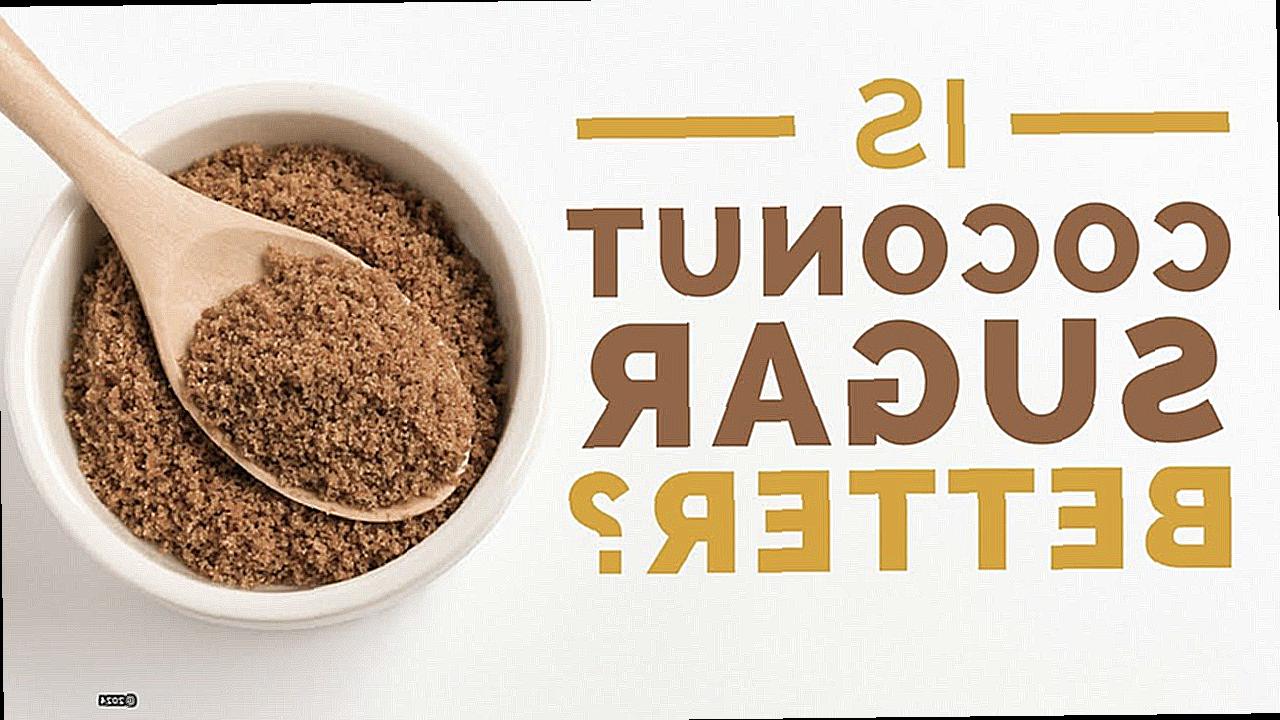Yes, coconut sugar can go bad, but it has an impressively long shelf life when stored properly. This natural sweetener derived from coconut palm sap is more resilient than you might expect.
Coconut sugar doesn’t spoil easily due to its low moisture content, but it can degrade in quality over time. Here are the key things to know:
- Properly stored, coconut sugar can last 2+ years past its “best by” date
- The main enemies are moisture and heat
- Signs of spoilage include clumping, unusual odors, or mold growth
- Airtight containers in cool, dry places are ideal for storage
While coconut sugar is quite shelf-stable, it’s not immortal. Understanding how to store it and recognize quality changes will help you enjoy this tasty alternative sweetener at its best.
Let’s dig into the details of coconut sugar’s longevity and how to keep it fresh for all your culinary needs.
Contents
Does Coconut Sugar Expire?
Yes, coconut sugar can go bad, but it has a long shelf life. When stored right, it can last up to two years or more. Unlike white sugar, coconut sugar has some moisture. This means it can spoil if not kept well.
The “best by” date on the pack is about quality, not safety. After this date, the sugar might lose some flavor or texture. But it’s often still safe to use.
Coconut sugar comes from coconut palm sap. It’s boiled and dried to make sugar. This process gives it a unique makeup. It has some fiber and minerals like iron, zinc, and calcium. These help it last longer than other sugars.
| Storage Type | Shelf Life |
|---|---|
| Pantry (unopened) | 2+ years |
| Pantry (opened) | 1-2 years |
Does coconut sugar go bad in the fridge? You don’t need to chill it. A cool, dry pantry works best. The fridge can add moisture, which is bad for sugar. Keep it in an airtight box away from damp, and it’ll last well past its “best by” date.
How Long Does Coconut Sugar Last?
Coconut sugar can last a long time if you store it right. It doesn’t really go bad, but it can lose quality over time. Here’s what affects how long it lasts:
- Bugs: They can get in if the container isn’t airtight.
- Moisture: It won’t cause mold, but it can make hard lumps.
- Smells: The sugar can soak up odors from nearby foods.
To keep it fresh, use a tight, dry container. If it gets lumpy, you can often fix it. Just break up the lumps with a fork or spoon.
You can swap coconut sugar for white sugar in most recipes. Use the same amount. It’s great for baking and cooking.
Can Coconut Sugar Go Bad?
Yes, it can. But it takes a while. If you store it right, it can last up to 18 months. Even after that, it might be okay to use.
Bad storage can make it go off faster. Keep it away from heat, light, and damp. These things can make it spoil quicker.
How do you know if it’s gone bad? Look for:

- Mold
- Weird smells
- Changes in how it feels
To keep it fresh, put it in an airtight box. Store it in a cool, dark place. This will help it last as long as possible.
How To Tell if Coconut Sugar Is Bad? The Key Signs
Wondering if your coconut sugar has gone bad? Here are some signs to watch for:
Unusual Smell
Fresh coconut sugar smells sweet, like caramel. If it starts to smell off, it might be bad. A sour or musty smell is a red flag. This can happen if moisture gets in.
Clumping and Hardening
Some clumping is normal. But if it turns into hard blocks, that’s not good. This means it’s soaked up too much moisture. While not always unsafe, it’s a sign of poor storage.
Mold Growth
Mold is the clearest sign of bad sugar. Look for fuzzy spots. They can be any color, not just green or black. If you see mold, throw the sugar away. It’s not safe to eat.
Off Taste
If the smell and look seem okay, you can taste a bit. Good coconut sugar is sweet with a hint of caramel. If it tastes sour or just wrong, don’t use it. A bad taste means it’s spoiled.
Changes in Color
Coconut sugar is light brown. If you see big color changes, be wary. Dark spots or white patches could mean it’s gone bad. Any odd colors are a sign to toss it out.
How to Properly Store Coconut Sugar To Extend Its Shelf Life?
Choose Airtight Containers for Storage
Pick containers that keep air and moisture out. Glass jars with rubber seals work great. Heavy-duty zip-lock bags are good too. These keep the sugar dry and fresh.
Keep It in a Cool, Dry Place
The pantry is perfect. Or a kitchen cupboard away from the stove. Avoid spots near windows or heat. Heat and steam can make the sugar go bad faster.
Consider the Fridge in Humid Climates
Live somewhere damp? The fridge can help. But be careful. Use a container that’s really airtight. This stops the sugar from soaking up fridge smells or moisture.
Regular Checks for Freshness
Check your sugar now and then. Look for mold, weird smells, or texture changes. If you spot these, it’s safer to throw it out. Better safe than sorry.
Freezing for Extended Shelf Life
Want to store sugar for a long time? Try freezing it. Use a freezer-safe, vacuum-sealed pack. Or an airtight container. Label it with the date so you know how long it’s been there.
What Happens If You Eat Expired Coconut Sugar?
Eating expired coconut sugar isn’t usually dangerous. Unlike some foods, sugar doesn’t grow harmful bacteria. Even past its “best by” date, it’s often safe to eat.
But the quality might not be great. Old sugar can get hard or clumpy. It might not taste as good. The texture could be off. While it won’t make you sick, it might not be nice to use.
If the sugar has been stored badly, there are risks. Moisture can lead to mold. If you see any mold, don’t eat the sugar. Throw it away to be safe.
Bugs can sometimes get into poorly stored sugar. If you see any signs of bugs, don’t use the sugar. It’s best to get rid of it.
In most cases, old coconut sugar is just less tasty. It won’t harm you, but it might not be great in your coffee or baking. When in doubt, use your senses. If it looks and smells okay, it’s probably fine to use.
FAQ
Does Coconut Flour Expire or not?
Yes, coconut flour can expire. It usually lasts 6-12 months past its “best by” date. To keep it fresh longer, store it right. A cool, dry place is best. You can also put it in the fridge or freezer to make it last even longer.
What Color Is Coconut Sugar?
Coconut sugar is light to dark brown. It looks a bit like raw sugar. The color can vary based on how it’s made. Darker sugar isn’t bad – it’s just processed differently. The brown color comes from natural compounds in the coconut sap.
Is Coconut Sugar Healthy or Bad for You?
Coconut sugar is often seen as a healthier choice. It has a lower glycemic index than white sugar. This means it doesn’t spike blood sugar as much. It also has some nutrients like iron and zinc. But these are in very small amounts.
However, it’s still sugar. Your body treats it much like regular sugar. It has the same calories. Eating too much can lead to health issues. Use it in moderation, just like any sugar.
Experts say it’s okay as part of a balanced diet. It’s not a health food, but it’s not bad either. If you like the taste, go ahead and use it. Just don’t overdo it.
Conclusion
Coconut sugar’s longevity might surprise you. This natural sweetener, derived from coconut palm sap, boasts an impressive shelf life when stored correctly. While it can degrade over time, proper care ensures it remains usable far beyond its “best by” date.
The key to preserving coconut sugar lies in protecting it from its main foes: moisture and heat. Airtight containers in cool, dry places are your best allies. With this simple strategy, you can enjoy your coconut sugar for two years or more past its printed date.
However, vigilance is crucial. Watch for signs of spoilage like clumping, odd odors, or mold growth. These red flags indicate it’s time to bid farewell to your sweetener.
Remember, coconut sugar isn’t immortal, but it’s certainly resilient. By understanding its storage needs and quality indicators, you’ll make the most of this tasty alternative sweetener in your culinary adventures.




